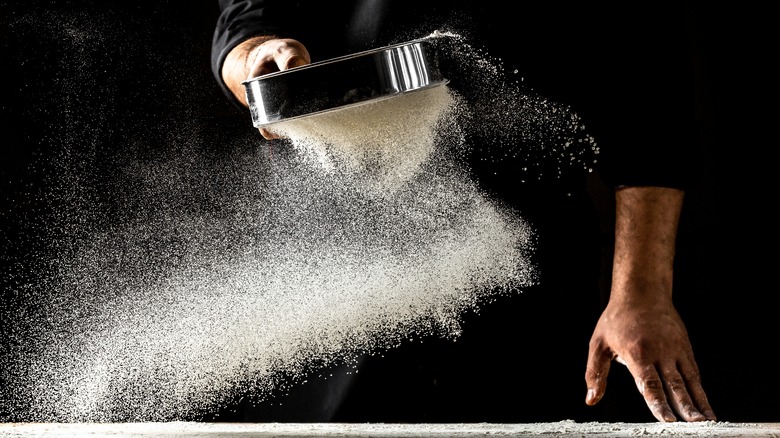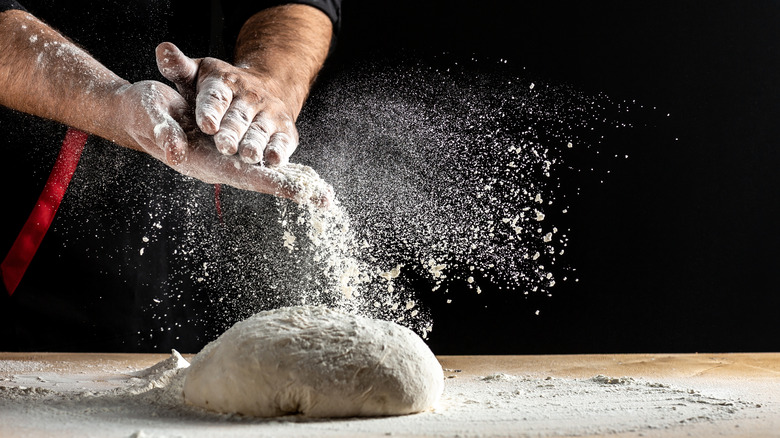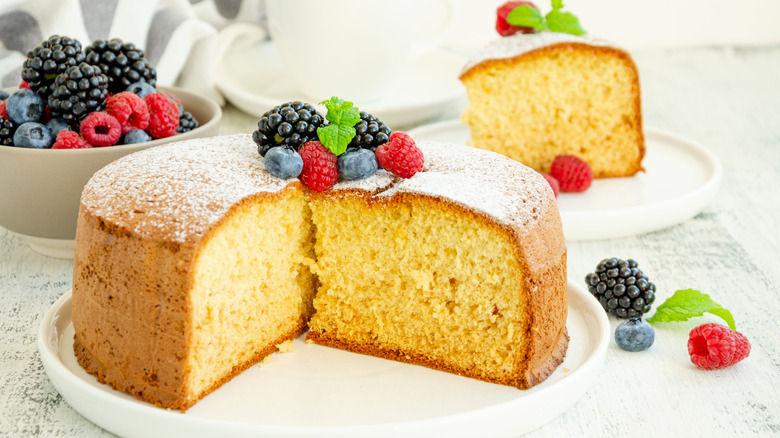When To Use High-Protein Flour Vs. Low-Protein Flour
There are so many mistakes to make when you're baking. Whether you've been doing it for decades or just started baking as a relaxing hobby, plenty of things can go wrong when you try out a new recipe or technique.
Like any other culinary art, having the right ingredients for the job is vitally important when it comes to baking. And what ingredient could be more vital to baking than your flour? The King Arthur Baking Company points out that flour is going to be the largest percentage of most baking recipes. It's the foundation that all of the other flavors are going to be built on, so you better get it right.
Serious Eats says that one of the most important qualities of wheat-based flour is its protein content. For wheat flours, protein goes far beyond its nutritional value, and is one of the most defining features for certain flours. A flour's protein content is going to dictate the amount of gluten formation in your baked goods. Gluten is the protein that forms the web-like structure in cakes, breads, and pastries. For example, gluten traps gasses in yeasted breads that allows the bread to rise. Not everything is well served by strong gluten development, though, and that's where low-protein flour is important to have on hand.
When is it best to use high-protein flour?
Serious Eats says that a high-protein flour will have a protein content that is higher than 12%. These flours are most often suited for use in recipes like breads and pizzas that will be aided by having a better gluten structure. Well-developed gluten content in bread doughs allows them to trap in more of the gas being released by the yeast. This allows them to rise more effectively during proving.
Homemade Pizza Pro says that high-protein flour is also good for a classic Neapolitan pizza. This is because the high gluten content will create a stretchy dough with an open interior structure. It also improves the texture by making the crust chewier, and less cracker-like. The outlet goes on to say that another high-protein flour is called semolina durum. This flour is most well-known for its use in classic pastas. Its high gluten content allows the dough to stretch out into the long shapes of linguine and spaghetti, and also gives it a nice, chewy texture when it's cooked al dente.
Serious Eats says many of these recipes will also work well with most all-purpose flours. The protein content of most all-purpose options will differ slightly, but options like King Arthur and Hecker's are around 11% normally which makes them suitable for breads, and pizzas.
When is it best to use low-protein flour?
According to Malayan Flour Mills Berhad, low-protein flours are best suited to cakes and biscuits that have a more dense, soft structure. The lower gluten content bonds closer together and produces a more even texture for foods like cake. That's why it's important to have cake flour on hand, which Bakerpedia says usually has a protein content of 7-9%.
Serious Eats says that low-protein flours are also useful for doughs that use chemical leavening agents like baking powder. Their rise tends to be more gentle than yeasted doughs, so having a looser structure in place helps them to rise effectively.
It should be noted that whole wheat flours are often treated like low-protein flours, but they actually have an average protein content. King Arthur Baking says that this is because the wheat's bran has sharp edges that cut the gluten as it forms. This is similar to the way that scalding flour breaks down gluten, and produces a softer dough instead. So, while whole wheat flours are often a high-protein flour, they act more like low-protein.
Taste of Home also recommends using a flour blend for pie crusts. Combining a low-protein cake or pastry flour with an all-purpose flour will give you the best of both worlds, and produces a more tender pie crust.


